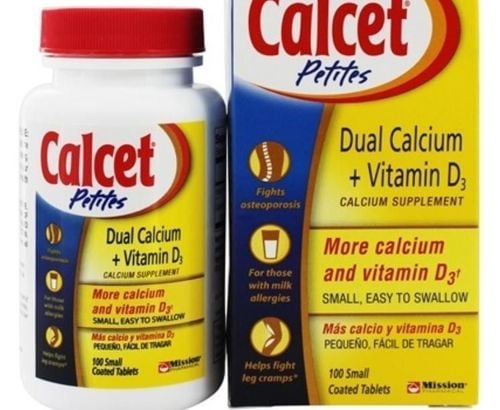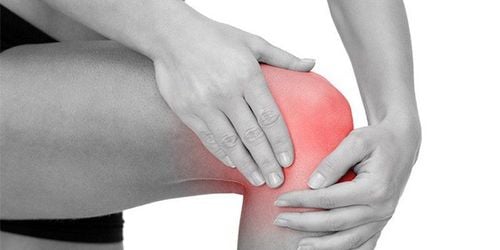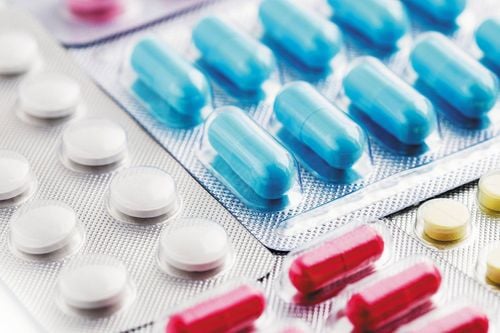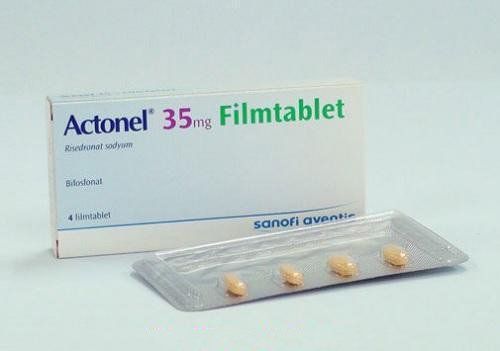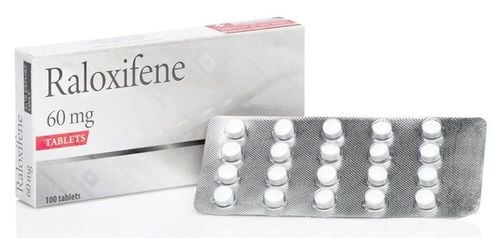This is an automatically translated article.
Osteoporosis drugs are commonly used to prevent bone deformities or help form bone. However, some side effects of the drug can occur that affect the patient's health. To use drugs safely and effectively, patients can choose the best osteoporosis drug with few side effects.
1. Are the side effects of osteoporosis drugs dangerous?
Side effects of each osteoporosis drug will be different. Depending on the severity, the side effects of osteoporosis drugs are divided into three groups, including common side effects, moderate side effects, and rare, serious side effects.
The most common osteoporosis drug side effects can include fatigue, abdominal pain, diarrhea, constipation, nausea, fever, hot flashes, sinusitis, headache, anemia, weight gain, cramps Leg pain, ankle swelling, bone pain, muscle pain, hand pain, foot pain, etc. Moderate side effects of osteoporosis medication may include: dizziness, insomnia, vomiting, sweating, breast pain, bronchitis, pharyngitis, urinary tract infection, joint pain, low blood pressure, hypokalemia, magnesium and phosphate in the blood, increased triglycerides, ... Side effects Severe symptoms of osteoporosis that can occur with osteoporosis medicine can include: severe musculoskeletal pain, hypocalcemia, decreased kidney function, jaw problems, pulmonary embolism (clots) blood clots in the lungs), deep vein thrombosis (DVT), stroke, blood clots in the retinal veins (rare), .... Accordingly, special attention should be paid to the side effects of thinning drugs. bones increase blood triglyceride levels, which in turn increased risk of blood clots, which can lead to stroke, deep vein thrombosis (DVT), and pulmonary embolism. The highest increased risk occurred during the first 4 months of treatment. Therefore, patients taking osteoporosis drugs should avoid vigorous exercise and impact for a long time since using osteoporosis drugs.

Tác dụng phụ của thuốc loãng xương làm tăng nguy cơ huyết khối tĩnh mạch sâu
MORE: Effects of osteoporosis drugs on oral health
Besides, osteomyelitis is a rare side effect associated with the use of osteoporosis drugs in the Bisphosphonate class. When that happens, the cells in the jawbone die, causing problems with the body's ability to heal wounds in the oral cavity. If you have a history of dental problems, have your health checked before starting treatment with the osteoporosis drugs Bisphosphonates.
In addition, the side effects of osteoporosis drugs can be a serious allergic reaction leading to shock, swelling of the tongue, swelling of the throat and even closure of the airways, causing problems with swallowing and breathing.
2. What drugs are effective for osteoporosis?
Although the side effects of osteoporosis drugs do exist, many of today's osteoporosis drugs have been shown to preserve or increase bone mass and density (effectively reducing fracture risk by up to 50 percent). % within one year). Depending on the specific treatment, lifestyle and economic needs of each patient, your doctor will help you choose the right treatment method, minimizing the side effects of osteoporosis drugs.
Osteoporosis drugs can be divided into 2 main categories: drugs that reduce bone loss and drugs that increase bone formation.
2.1 Drugs that slow bone loss Drugs that slow bone loss include Bisphosphonates, selective estrogen receptor modulators, hormone replacement therapy (HRT), Treatment with non-sex hormones and Ligand inhibitors.
Bisphosphonates Bisphosphonates are a group of drugs that inhibit bone resorption by directly acting on bone structure, slowing down the rate of bone breakdown in the body, thereby maintaining bone density and reducing the risk of fractures. There are several different bisphosphonates available, either in pill or injection form, including: alendronic acid, ibandronic acid, risedronic acid, zoledronic acid.
For optimal effect, always take Bisphosphonates on an empty stomach with a full glass of water, stand or sit upright for 30 minutes after taking the medication and should wait 30 minutes to 2 hours before eating or drinking any food. any other liquid. Bisphosphonates typically take 6 to 12 months to work, and treatment with Bisphosphonates can take up to 5 years or longer to successfully treat osteoporosis.
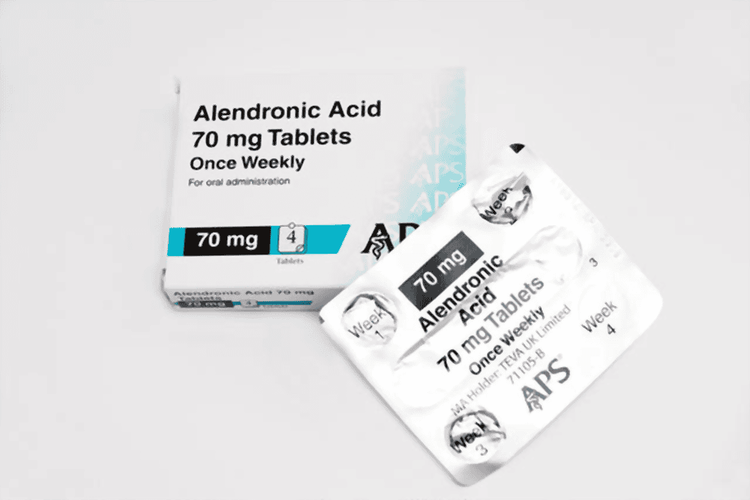
Thuốc axit alendronic thuộc nhóm Bisphosphonates ức chế quá trình tiêu xương
Selective estrogen receptor modulators
Selective estrogen receptor modulators are also known as SERMS or estrogen analogues. These substances mimic estrogen, acting similar to estrogen in the body to help limit the breakdown of bones in the body. Typical osteoporosis drugs in this class of drugs include Raloxifene (Evista) for the treatment of postmenopausal osteoporosis, Bazedoxifene, and Lasofoxifene.
Hormone replacement therapy (HRT) During menopause, the body stops producing some sex hormones such as estrogen, progesterone, increasing the risk of osteoporosis. The prevention of osteoporosis by using hormone replacement substances is essential. Many osteoporosis drugs in this group contain estrogen or a combination of estrogen and progesterone such as Cenestin, Premarin, Prempro, etc. In men, the use of testosterone has proven effective in the treatment of osteoporosis caused by hormone deficiency. male sex.
Non-sex hormones and Ligand inhibitors
Non-sex hormone-containing osteoporosis drugs such as Calcitonin (Miacalcin Nasal Spray) inhibit bone resorption by inhibiting osteoclasts, a type of cell "digest" bones to release calcium and phosphorus into the bloodstream.
Meanwhile, Ligand inhibitors, such as Denosumab (Prolia) like to inhibit bone resorption by blocking the formation, interfere with the function and survival of osteoclasts.
2.2 Parathyroid hormone and drugs that increase bone formation Parathyroid hormone is produced naturally in the body and has the function of regulating the amount of calcium in the bones. Parathyroid hormone treatments such as Teriparatide injections are used to stimulate new bone-forming cells.
While other drugs can only slow down the rate of osteoporosis, parathyroid hormone can increase bone density. However, it is only used for a small number of people with very low bone density and when other treatments have not worked.

Để phòng ngừa bệnh loãng xương, người bệnh nên định kỳ kiểm tra sức khỏe tại cơ sở y tế uy tín như Vinmec
Osteoporosis is a very silent disease, so when the disease has specific signs, the patient's body has lost a significant amount of bone. Therefore, periodic bone density testing to check bone health is very important. Besides, maintaining the use of osteoporosis medication is also very important.
At Vinmec International General Hospital, the method of assessing bone density is being applied in the diagnosis of osteoporosis or fracture risk. The entire team of medical staff at Vinmec are highly qualified and experienced; Fully equipped and modern medical equipment, including the DEXA osteoporosis meter, helps to accurately detect and evaluate the disease condition, using less X-ray dose than X-ray, so it is safe and secure. safer for the patient.
Therefore, if a patient is suspected of having osteoporosis or has been diagnosed with osteoporosis, they can go to Vinmec International General Hospital for examination, diagnosis and advice on how to use osteoporosis drugs effectively, avoiding the following problems. unwanted side effects occur.
Please dial HOTLINE for more information or register for an appointment HERE. Download MyVinmec app to make appointments faster and to manage your bookings easily.
Reference sources: nhs.uk, medicinenet.com, emedicinehealth.com



